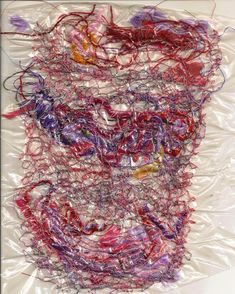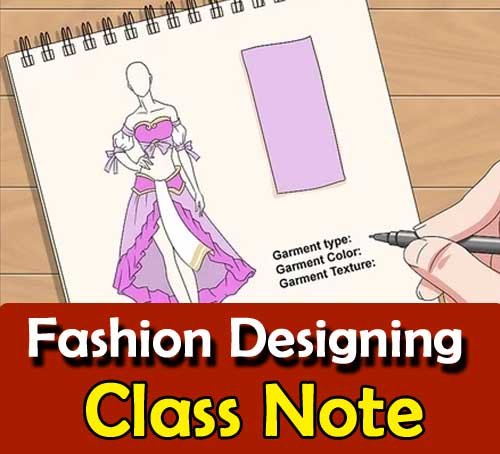Fabric imbalance in fashion design refers to the intentional use of contrasting or unconventional fabrics within a garment or collection. This technique challenges traditional perceptions of textile usage and creates unique visual and tactile experiences. Understanding fabric imbalance involves exploring the interplay between fabric properties, design intent, and aesthetic impact. This class note explores the concept of fabric imbalance in fashion design, its principles, techniques, applications, and its role in fostering creativity and innovation.

1. Principles of Fabric Imbalance
Fabric imbalance is rooted in the principles of contrast, juxtaposition, and creative tension:
- Contrast: Utilizing fabrics with differing textures, weights, patterns, or finishes creates visual and tactile contrast within a garment.
- Juxtaposition: Placing fabrics with contrasting properties side by side enhances the visual impact and creates dynamic interest.
- Creative tension: Balancing disparate fabrics in a harmonious yet unexpected manner challenges conventional design norms and stimulates creativity.
By strategically combining fabrics that differ in characteristics, designers can achieve unique aesthetic effects and imbue garments with depth and complexity.
2. Techniques for Fabric Imbalance
Achieving effective fabric imbalance requires careful consideration of fabric selection, placement, and manipulation:
- Fabric selection: Choose fabrics that contrast in texture (e.g., silk chiffon with wool crepe), weight (e.g., lightweight organza with heavy denim), pattern (e.g., floral print with geometric motifs), or opacity (e.g., sheer mesh with opaque cotton).
- Placement: Determine where each fabric will be used—such as contrasting panels, sleeves, yokes, or overlays—to highlight the imbalance and create focal points.
- Layering and mixing: Experiment with layering different fabrics or mixing them in unexpected combinations to create depth and visual interest.
- Manipulation techniques: Consider techniques like draping, pleating, ruching, or gathering to manipulate fabric properties and enhance the imbalance effect.

By mastering these techniques, designers can achieve nuanced fabric combinations that elevate the conceptual and aesthetic impact of their designs.
3. Aesthetic and Design Considerations
Fabric imbalance contributes to the overall aesthetic and design narrative of a collection:
- Conceptual storytelling: Use fabric imbalance to convey themes, narratives, or emotional responses through visual and tactile means.
- Aesthetic diversity: Embrace diversity in fabric choices to cater to varying tastes, preferences, and cultural influences.
- Fashion identity: Establish a distinctive design identity by exploring unconventional fabric combinations that reflect individuality and creativity.
- Seasonal relevance: Adapt fabric imbalance techniques to suit seasonal trends, climate considerations, and functional requirements of the garments.
Consider how fabric imbalance aligns with the intended design philosophy and resonates with the target audience’s sensibilities.
4. Applications of Fabric Imbalance
Fabric imbalance finds application across various aspects of fashion design:
- Haute couture: Couture garments often showcase intricate fabric imbalance to demonstrate craftsmanship, innovation, and exclusivity.
- Ready-to-wear: Incorporate subtle fabric imbalance techniques into ready-to-wear collections to add a touch of sophistication and uniqueness.
- Avant-garde fashion: Push creative boundaries in avant-garde fashion by experimenting with radical fabric combinations that challenge conventional aesthetics.
- Textile experimentation: Collaborate with textile designers and manufacturers to develop custom fabrics that facilitate fabric imbalance in design.
Exploring diverse applications enables designers to expand their creative horizons and differentiate their work in a competitive fashion landscape.

5. Challenges and Considerations
While fabric imbalance offers creative possibilities, designers should navigate challenges effectively:
- Fabric compatibility: Ensure fabrics are compatible in terms of care, durability, and performance to maintain garment quality and longevity.
- Balance and proportion: Strive for balance in fabric usage to avoid overwhelming or disjointed designs that detract from the garment’s coherence.
- Technical expertise: Develop proficiency in fabric handling, construction techniques, and garment engineering to execute complex fabric imbalance designs effectively.
- Client and market acceptance: Consider the practicality and marketability of fabric imbalance designs to align with client expectations and consumer preferences.
Navigating these challenges requires a blend of technical skill, creative vision, and strategic decision-making to achieve successful fabric imbalance outcomes.
6. Examples and Inspiration
Explore how renowned designers incorporate fabric imbalance in their collections:
- Alexander McQueen: Known for juxtaposing delicate fabrics like lace and chiffon with heavier materials such as leather and metal hardware.
- Comme des Garçons: Celebrated for experimental fabric combinations that challenge traditional notions of silhouette and texture.
- Issey Miyake: Innovates with pleating techniques and fabric manipulation to create garments that blur the line between clothing and sculpture.
Draw inspiration from these examples to explore your unique approach to fabric imbalance and cultivate a signature style in fashion design.

Conclusion
Fabric imbalance in fashion design represents a departure from conventional textile usage, offering designers a platform for creative exploration and innovation. By embracing contrast, juxtaposition, and creative tension, designers can create garments that resonate with depth, complexity, and visual intrigue. Through strategic fabric selection, placement, and manipulation, fabric imbalance becomes a powerful tool for storytelling, aesthetic expression, and establishing a distinct design identity.
Aspiring fashion designers are encouraged to experiment with fabric imbalance techniques, push creative boundaries, and challenge traditional design norms to discover new possibilities in textile-driven artistry. By harnessing the transformative potential of fabric imbalance, designers can shape the future of fashion with visionary and boundary-pushing creations.

